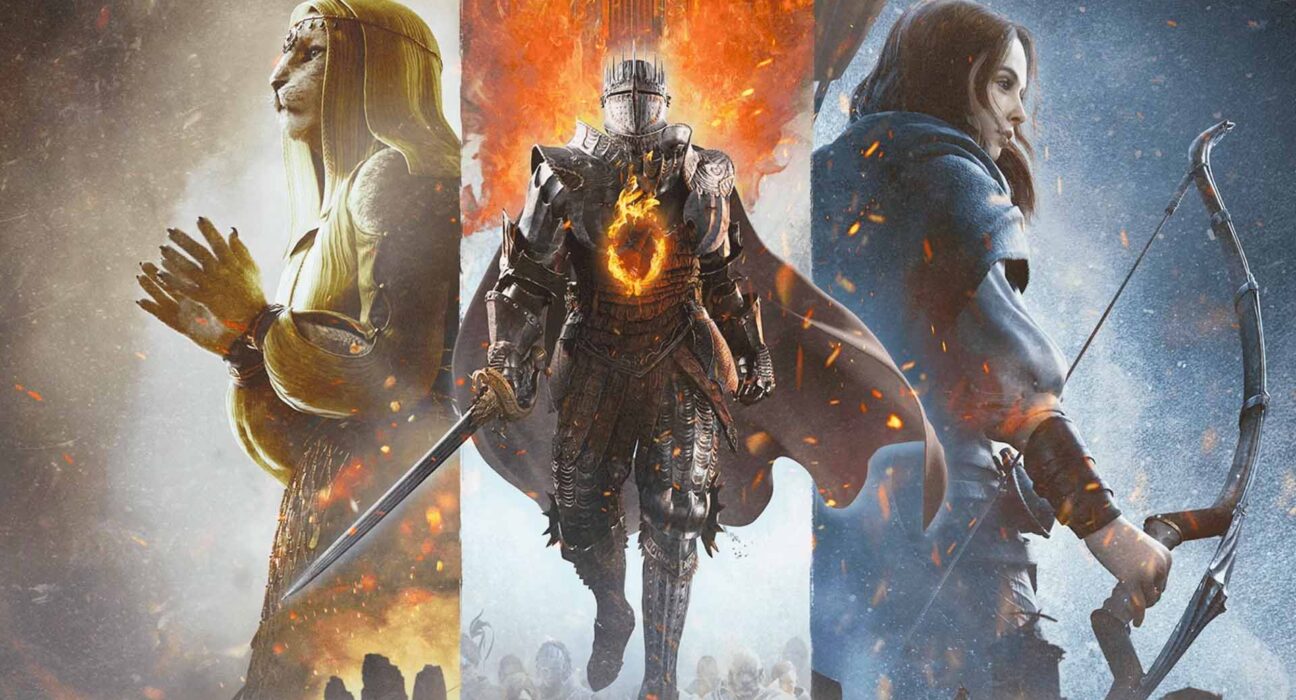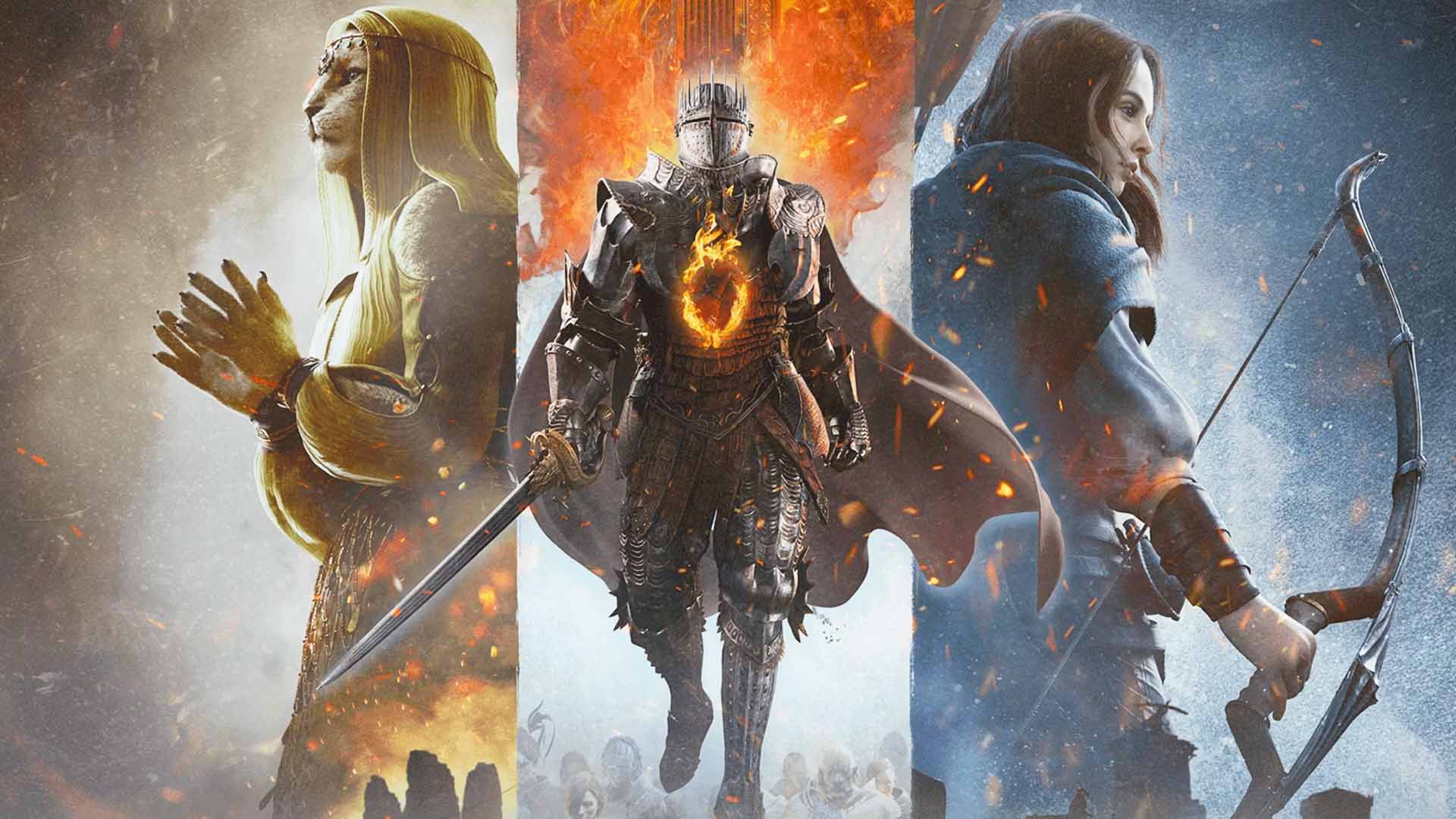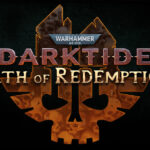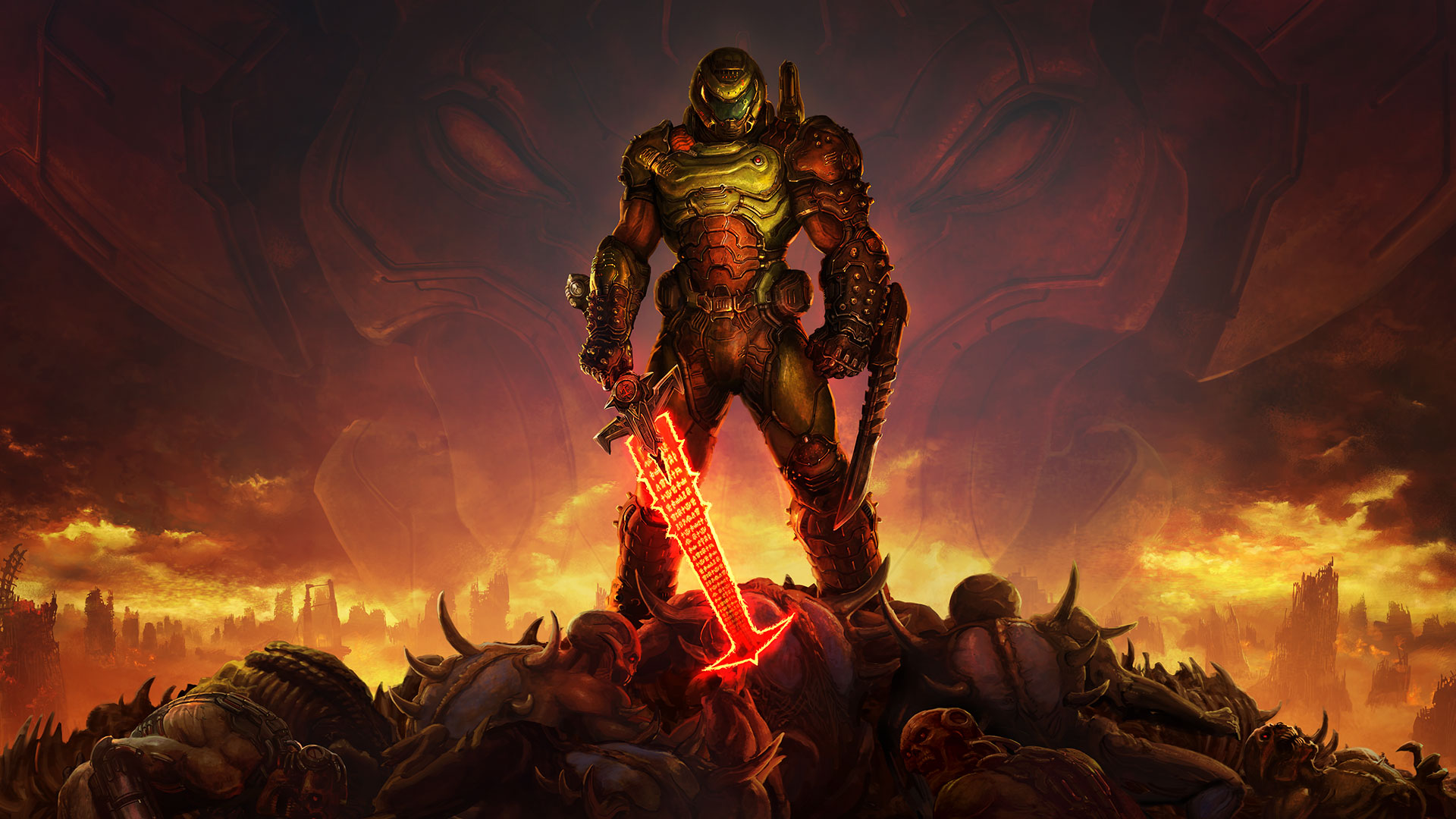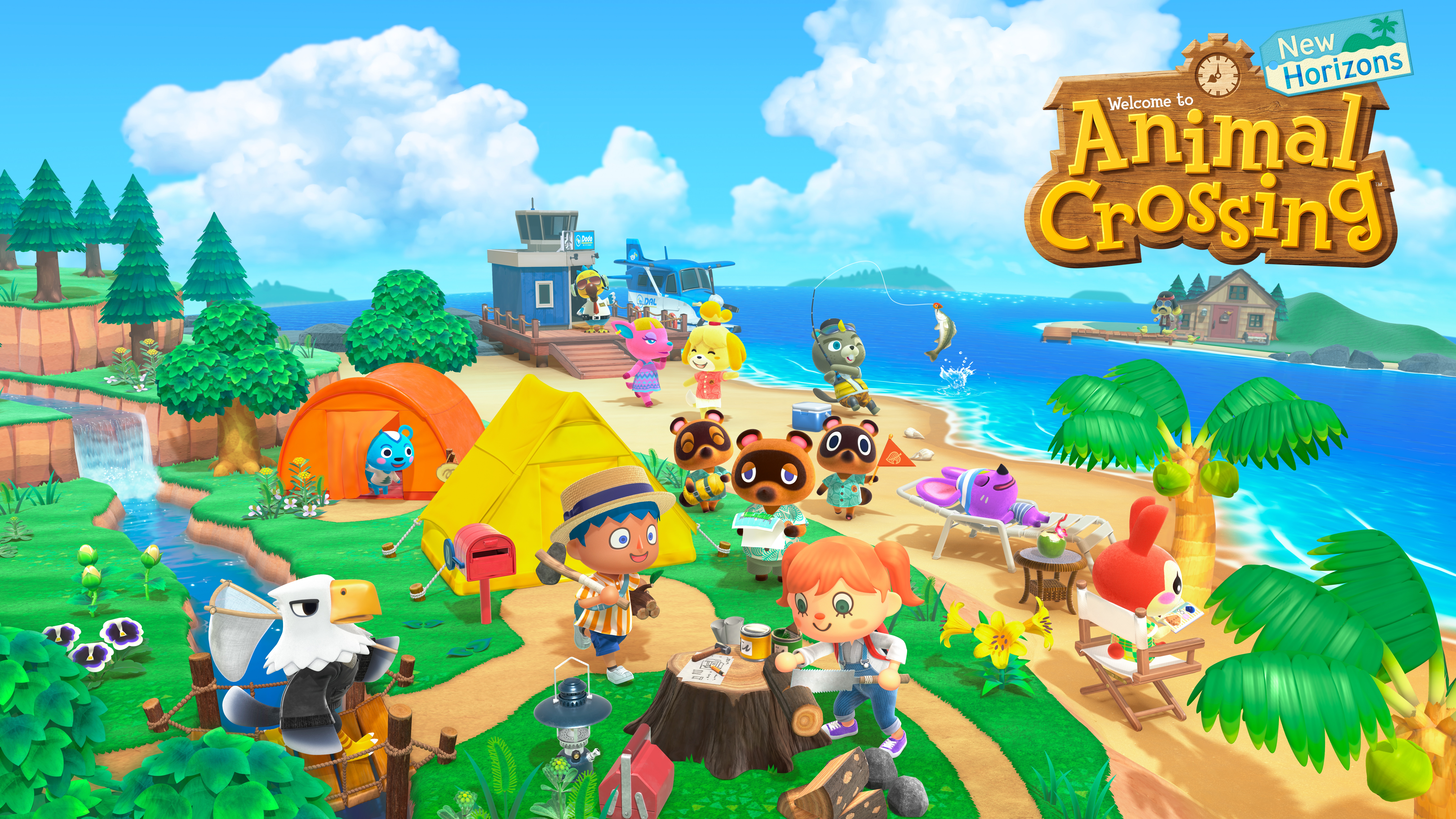Dragon’s Dogma was released just under twelve years ago and has kind of existed as a cult classic. Those who have played it really resonated with it and swear by its brilliance. It’s a game whose design isn’t very flexible and so players can easily bounce off it. Still, if you decided to stick with it you were given the pleasure of a uniquely janky but compelling experience. The game’s design especially sticks out in the current gaming landscape as we have grown accustomed to numerous elements of navigation UI like minimaps and waypoints, and it’s for this reason that Dragon’s Dogma 2 sticks out like a sore thumb. It’s unrelenting in its reliance on player exploration and experimentation, it has a clear focus on bucking design trends and at no point does it second guess itself.
Dragon’s Dogma 2 is set in the kingdom of Vermund and Battahl, where humans and Beastren (think cat people but like actual cat people, not Final Fantasy cat people) live together. You play the part of the Arisen, a person whose heart has been stolen, literally, by a dragon. The people are a little sceptical of your claims regarding your status as the Arisen but those sceptics are soon proven wrong as you summon your own Pawn (think ethical servants created by the Arisen). From there you are recommended to venture to the city of Vernworth but really you are left to your own devices from here on.

The core crux of Dragon’s Dogma 2’s story is one of mystery, espionage, and usurpation. The kingdom of Vermund is supposed to be ruled by the Arisen, with the title being the Sovren. The problem is, you are an Arisen yet somehow there is an Arisen already seated as the Sovren. This doesn’t make much sense so it is up to you to figure out exactly how such a problem could occur.
Your adventure to figure out what is going on will have you interacting with Vermund and its inhabitants. The world is rife with people who are in need of aid, whether it be the victims of vicious dragon attacks, people who need escorting from one place to another, or even solving the bizarre inner workings of healing shelters. There are so many stories to be told, and because there are so many, there is less of a focus on telling an extremely cohesive main story.
This is not to say that the general story writing is bad, but rather it feels squandered. The main story of Dragon’s Dogma 2 feels genuinely interesting and its ideas feel rife for proper exploration, but because the main focus is on telling all of Vermund’s stories rather than one you instead have something that is full of potential which ends up feeling like it is either rushed or doesn’t close out properly. It’s a tough nut to crack because the writers obviously didn’t want the main story to be an afterthought, but you go from talking to political leaders and then all of a sudden you are at the end…potentially.
Dragon’s Dogma 2 features multiple endings and the ending you choose will determine how the game ends but, more importantly, when the game ends. Provided you make the right decisions, the game has a final chapter where the focus on the world rather than a singular story really brings the whole thing together. Your interactions with the various characters within all the playable areas and towns are incredibly important, and your ability to build relationships with them is paramount to your character’s success – whether this means you ignore them or not is entirely up to you and how you would like your character to be.

The writing is also vital to the game’s world-building. There are four races of people: the Humans, the Beastren, the Dwarves, and the Elves. These races exist for more than just visual diversity, there is actual history behind these races. They have their differences, they fight, they disagree, but they also can rise above their differences and predispositions towards one another. There are quests and stories where bigoted people get their comeuppance, and there are also quests where people set aside their differences to help others, whether it be directly or indirectly. These cultures have their own architecture and even languages, there’s a lot of love that has been put into building this world and it serves the game’s goal of immersing the player.
These differences also have a gameplay impact in the form of the gear upgrade system. Dragon’s Dogma 2 isn’t a game that is about its loot. It would rather focus on a smaller pool of gear and allow you to enhance in a few ways. Like the races, there are four kinds of smithing styles of upgrades: Vermundian, Battahl, Dwarven, and Elven. Each style focuses on different attributes of your gear, and you can mix and match these upgrades to suit your character’s needs. The priorities of what stats you need are dependent on your party composition and your selected Vocation.
Vocations are effectively classes, and there are ten of them: Fighter, Thief, Archer, Mage, Warrior, Sorcerer, Mystic Spearhand, Trickster, Magick Archer, and Warfarer with the latter four being Arisen-exclusive. Each class plays in fun and unique ways (kind of like how Final Fantasy XIV used to be before the homogenisation of its classes) and some even exist almost as hybrids of other classes like the Magick Archer. Your starting four Vocations are the Fighter, Thief, Archer, and Mage, with the other six Vocations being unlocked as you play the game. The most unique Vocation is the Trickster, as your role in the party is more of a supplementary role than with any of the other Vocations. It’s really cool, but it highlights one core issue. The pawns are really stupid.
For the most part, the Pawns you have in your party will be a godsend. They’ll heal you, catch you if you fall near them, buff you and work with you to overcome any obstacles in your way. Therein lies the problem, the Pawns are generally best served as support for your playstyle, not the other way around, so even though you the AI for the Pawns can be great you are also open up to just having three party members that watch you get pummeled and tossed around and it can be incredibly frustrating. The behaviour of Pawns is determined by what personality traits they are given, and most of them prevent Pawns from being super active and aggressive in combat which is what you need for the most success in using the Trickster Vocation.

Dragon’s Dogma 2 is a game that asks the player to pay attention to its little details and intricacies, with varying degrees of consequence if you don’t. The biggest example for this is Dragonsplague, a new mechanic to Dragon’s Dogma where Pawns are infected and slowly lose control of themselves, eventually lashing out and wiping out any settlement or town you rest at. You will know when you first get a Pawn with Dragonsplague as a tooltip will show up, but after that, it’s a matter of paying attention to your Pawns’ behaviour and words, as they will be the signs of whether or not your Pawns are infected. The consequences are devastating but the game does communicate the presence of the Dragonsplague, especially when a Pawn outright refuses a direct command. The easiest way to counter this is when you notice something that hints at Dragonsplague (the Pawns will often talk about the symptoms of Dragonsplague so you will know what to look out for) find the nearest body of water and throw all your Pawns into it, then go to a Riftstone to resummon your Pawn and rebuild your party. Unfortunately, the only way to ensure your own Pawn hasn’t caught it is to throw it in water to effectively kill it, as the game states death is the only cure. You have plenty of time to act though, so you can get as close to a Riftstone as possible before you throw your party to its own demise.
This game doesn’t really guide the player, per se, and that is what is so brilliant about it. It has more or less been designed from the ground up to not require any UI, which I adore. I ended up turning my minimap off entirely because if there is one UI element I hate, it is minimaps, and any time a game feels designed to use a minimap liberally I struggle to enjoy it *glares at Cyberpunk 2077*. Dragon’s Dogma 2 doesn’t rely on its minimap, the world is intelligently designed and has aggressively vertical landscapes like Elden Ring. It fosters a sense of wonder and intrigue by not showing you everything all the time, and it refuses to have a waypoint that constantly points in the direction for you to go. It’s also here where the game does something really unique through the Pawns. If you are doing a quest that one of your Pawns has been a part of before in another player’s world, they will offer to guide you in the direction of the quest’s objective/destination. Additionally, the Pawns will also offer to guide you to chests and Riftstones they have found in other players’ worlds, and points of interest like ladders and statues will be pointed out to the player.
I know it sounds as though someone who prefers a little navigational assistance will hate this game, but because it has been well-designed without the reliance on UI elements it instead offers a really great blend of classic and modern design. It won’t point everything out to you, you will need to figure things out yourself (or look at a guide if you’d like, that’s perfectly valid) but it will still point you in the right direction for the most part.
Dragon’s Dogma 2 places a lot of trust in the player and while it does hint at some of its intricacies, it also just leaves the player to experiment and discover things. This isn’t just with the world, but also with its inhabitants. The answers to problems in quests aren’t always as simple as “interact with X person” or “collect X item”, sometimes you have to do a specific action or use the available information to figure out what the answer is. A great example was a quest where a rich Bougie jerk was hoarding some transportation carts and the answer to the puzzle was to draw my weapon and intimidate them.
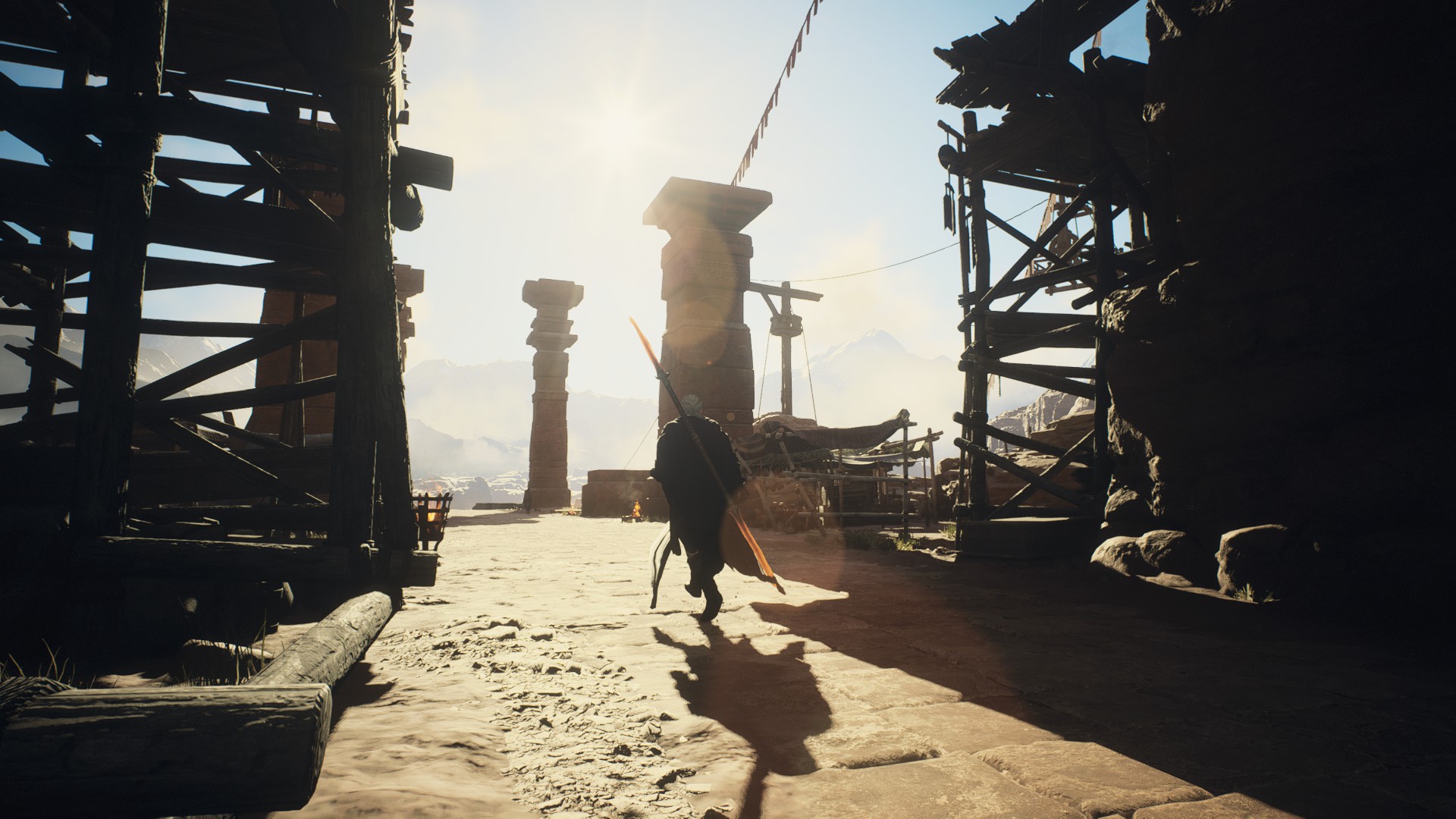
These indirect answers extend to combat and traversal as well. You can use the big enemies as vessels for transport, which the game showcases in the opening act. You can destroy rope bridges to cut enemies off from reaching you, and these rope bridges will be rebuilt as well. You can pick enemies up and throw them at others to knock them down. There are a lot of possibilities with this game and it would not be possible without the game trusting the player to experiment and try different things.
Because the game places so much trust in the player, it occasionally risks feeling unfair, especially if your party composition isn’t the smartest. The game can come off as a trial of frustration when this happens but at the same time, it trusts you to figure out how to turn this seemingly unfair design against your enemies. For every ganking you receive, you can also return. You can stun-lock enemies, debuff them, and quickly dispatch them, you can even get a skill that allows you to instantly launch enemies across the map to take them out of combat. At the same time, the game also really factors in how different species and factions interact. There are cross-faction skirmishes, the large enemies like Griffons will actively battle with the small groups of bandits and goblins etc. The nature of all these interactions makes for scenarios that can differ wildly.
The encounters with the large monsters and creatures are almost always a thrill ride. There are so many ways to approach these monsters and the game responds in various ways. You can try to keep dragons and drakes grounded, bait minotaurs into running at walls and concussing themselves, or force Griffon to fall over by setting them on fire. But what makes these encounters even better is the music. If you have played the original game, you know exactly what I am talking about. Dragon’s Dogma 2 sees the return of the classic “End of the Struggle” song and has similar requirements to play. Forcing the large enemies into positions where they are losing ground in the fight will cause this song to play and, simply put, this game has incredible victory lap music. Capcom is pretty good at crafting music to amp up the player, with one of the best examples being Monster Hunter’s “Proof of a Hero”. Every time this climax music plays in Dragon’s Dogma 2, it’s impossible not to feel incredibly amped.
Now, not every rendition of classic themes from the original is perfect, with the aforementioned “End of the Struggle” being a little disappointing compared to the perfection of the original. The piece is still exceptional, regardless of rendition, but when compared to the original version it’s hard not to feel a little cheated. Rubbing salt in the wound is the “Music & Sound Collection” DLC. This pack allows you to swap the music and sounds to their original counterparts where applicable. None of this stuff is a deal breaker, but if you are hoping to capture the brilliance of the original OST, you will need to purchase this DLC as Dragon’s Dogma 2’s soundtrack, while still phenomenal, falls a little short of the original when there is overlap.
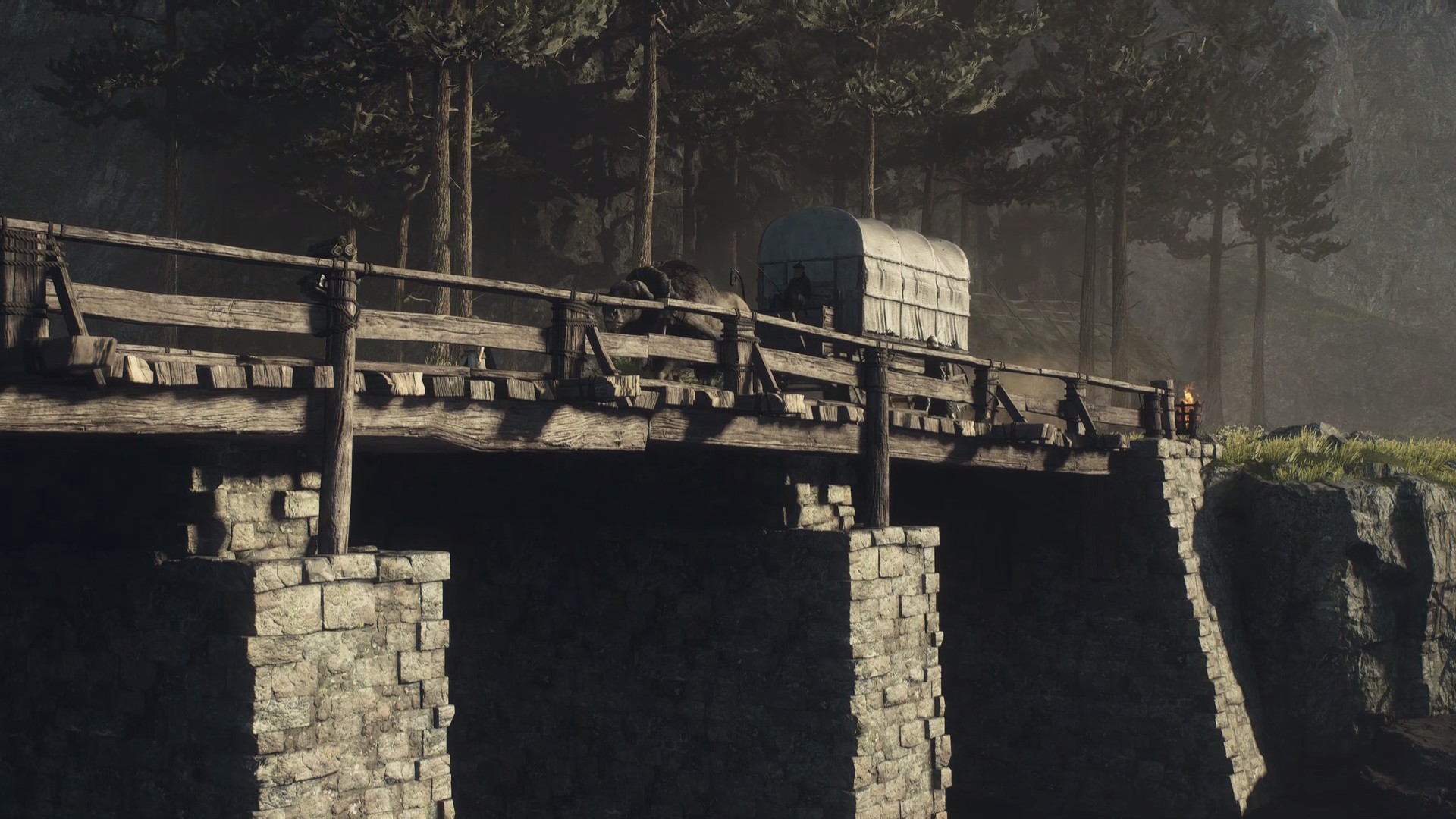
Since the “Music & Sound Collection” was brought up, let’s address the elephant in the room; the microtransactions. Capcom has been on a pretty good roll since the revitalisation of the Resident Evil series and even more so following the release of the insanely popular Monster Hunter: World. However, the developer/publisher has been hard at work trying to torpedo its reputation with ridiculous microtransactions like with Resident Evil 4, or bizarre consumer-hostile actions like with the recent inclusion of atrocious DRM to its already existing/legacy products like with Monster Hunter Rise. The latter of which entirely broke compatibility with the ever-popular Steam Deck and resulted in a previously well-received game getting review bombed on Steam. The problem was rectified but should never have existed as DRM only ever exists to harm those who purchase the game, not those who pirate.
Adding to the list of terrible decisions, Capcom cynically waited until reviews for Dragon’s Dogma 2 had come in before adding a host of microtransactions poised at cutting the game out of the game. You can buy Rift Crystals, which are used for hiring other Pawns that are a higher level than you, Wakestones, which are used for reviving yourself or other NPCs and even Portcrystals, an item that exists for placing down your own fast travel points. All these options make no sense because the game readily gives most of these to players. The Rift Crystals are the most confusing because, unless you are hiring Pawns that are a significantly higher level than you, you rarely need more than around 40. Wakestones aren’t used very often and the Portcrystals don’t really need to be used (and are also reusable). What it feels like is that the developers put in such hard work to create a perfectly enthralling and compelling game, and some out-of-touch executive wasn’t happy with a lot of money; only ALL the money will suffice. So, these microtransactions are clearly an afterthought and largely ignorable. While yes, these do technically make the game pay to win, they are not invasive by any means and all they really do is create a large stain on the wonderful tapestry that is Dragon’s Dogma 2.
I am not wholly disillusioned by the fact that Dragon’s Dogma 2 has some serious performance issues. It was noted in the game’s preview period that the console versions had some frame pacing issues, and it comes as no surprise that the first use of Capcom’s impressive RE Engine outside of the small rendering environments that we have seen it used for previously has some hiccups. In my time playing on PC I noticed drops in frames in various areas, especially in the cities where there was a high density of NPCs. My PC is no slouch either, sporting a Ryzen 9 7950X and an RTX 3080 Ti with 64GB of DDR5-6000 memory, and the game was installed on a PCIe 4.0 NVMe SSD. Still, even when playing the game at 1080p (that’s right, not even 1440p or 4K) my framerate would sometimes dip below 60fps. For most of the map, it was okay, but still a little bummed out that these performance issues were present. In saying that, Capcom has been working towards optimising the game so there is at least that. I did also have a few (sometimes frustrating) crashes, probably around five or six, and while they weren’t incredibly common, they were still always in the realm of possibility.
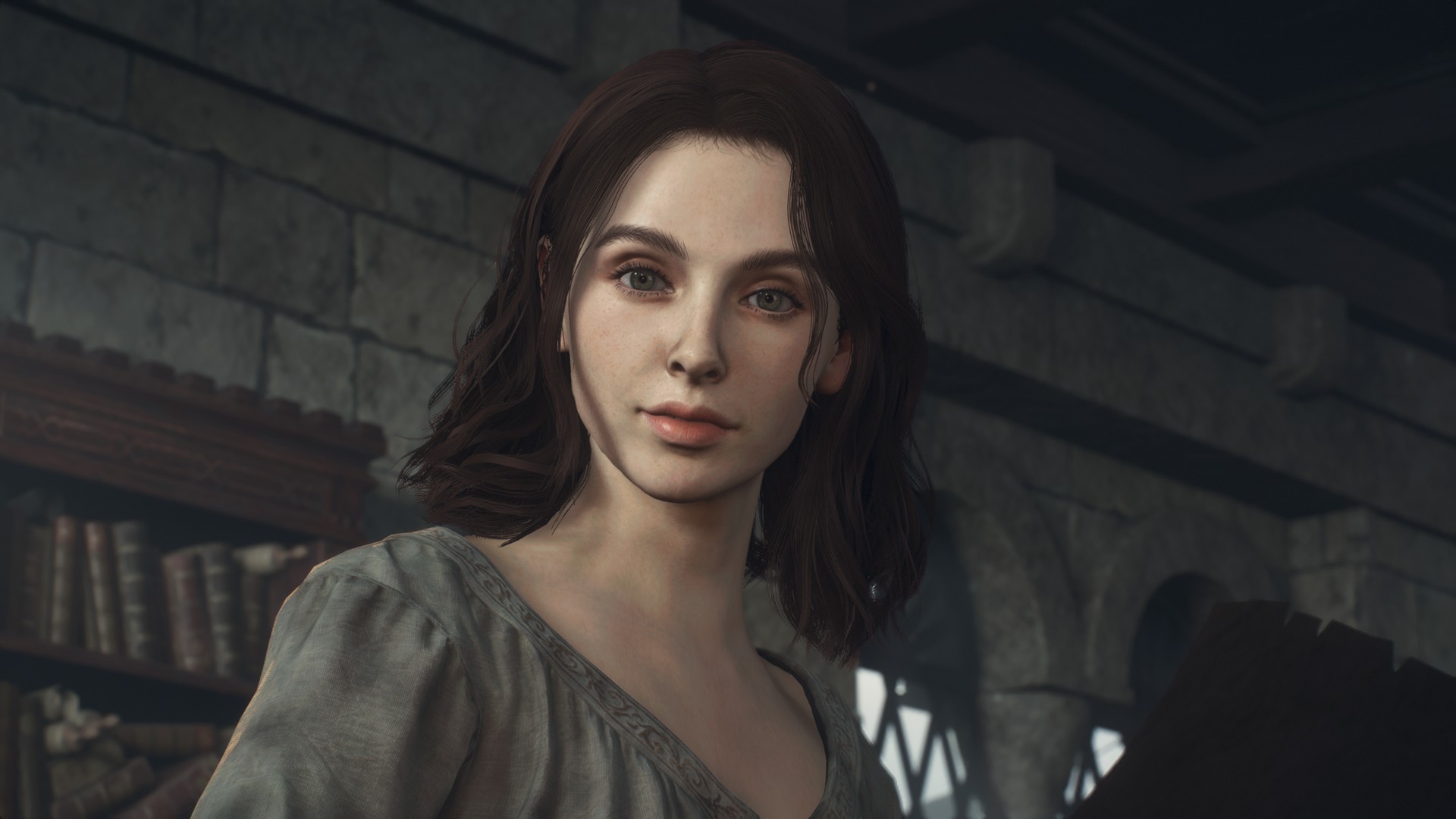
Though the game has some performance issues, Dragon’s Dogma 2 is an insanely beautiful game. The core theme of the Dragon’s Dogma series is being as generic high fantasy as possible, and the artists nailed it. The RE Engine has been used exceptionally well to create some truly captivating vistas and landscapes. The detail and materials for clothing and the terrain are excellent, and the lighting is incredible. Even down to the darkness in the game, it’s one of the few games where torchlight is incredibly useful. Nighttime can be genuinely haunting if you don’t feel confident in your party, your sightlines are very restricted and so you can be caught off guard by hostiles emerging from the darkness – especially when it’s darker large monsters like Ogres or Cyclopses. One touch that I really liked was that, during cutscenes, the render quality is brought way up as the rendering requirements for these scenes are much lower due to the elimination of various elements. It doesn’t exactly feel like a pre-rendered cutscene as it adapts to whatever customisations you have applied to your character, but it’s enough to make the viewing of these cutscenes all the better.
The most impressive part about Dragon’s Dogma 2 is how its technical problems aren’t enough to prevent the game from being exceptional. Performance issues can make a bad game unbearable, but this is not one of those cases. Much like with Elden Ring and Baldur’s Gate 3, the experience of Dragon’s Dogma 2 is so captivating that it rises above its own technical problems and continues to be a great game regardless. The performance issues will likely be fixed in due time, and what remains is an exceptionally unique game.
- Conclusion
- Dragon’s Dogma 2 is uncompromising in its design. It is a game whose flaws are just as important as its pros, as they exist because of each other. Due to this, the game is not for everyone and if it isn’t for you, that is perfectly fine! However, Dragon’s Dogma 2 stands almost as the antithesis of contemporary open-world game design. It places immense trust in the player and focuses on the good and bad consequences of engaging with that trust. For every unfair thing the game throws at the player, it is equally unfair to its hostile creatures. It is one of the most compelling and engaging open-world RPGs and stands next to the genre giants like the recent Elden Ring and Baldur’s Gate 3 as the pinnacle of creativity and confidence in design. Not even its technical woes or questionably stupid microtransactions are enough to pull this game down.
- PC
- CPU: Ryzen 9 7950X
- Motherboard: ASUS TUF Gaming X670E-Plus
- GPU: MSI RTX 3080 Ti GAMING X TRIO 12GB (Driver ver. 551.86)
- Memory: G.Skill Trident Z5 RGB 64GB (2x32GB) DDR5-6000 CL32
- Storage: Samsung 970 EVO Plus NVMe SSD 500GB (OS), Kingston NV2 M.2 NVMe Gen4 SSD 4TB (Game install)
- OS: Windows 10 Home (Build ver. 19045)



